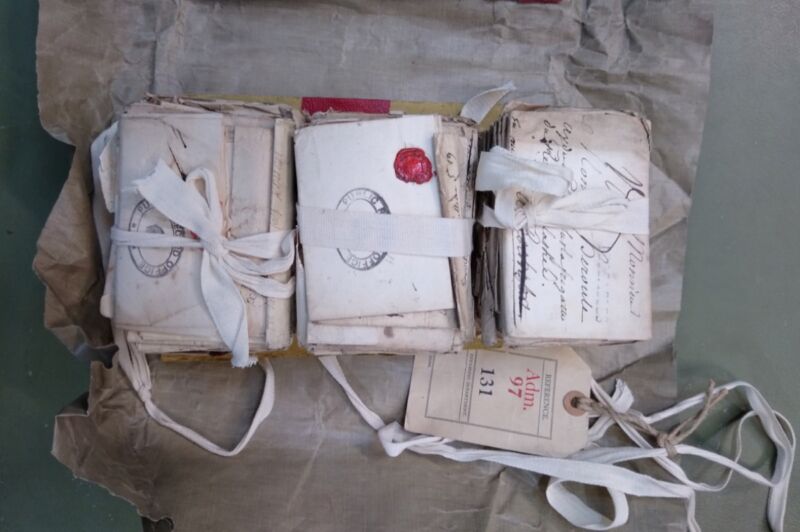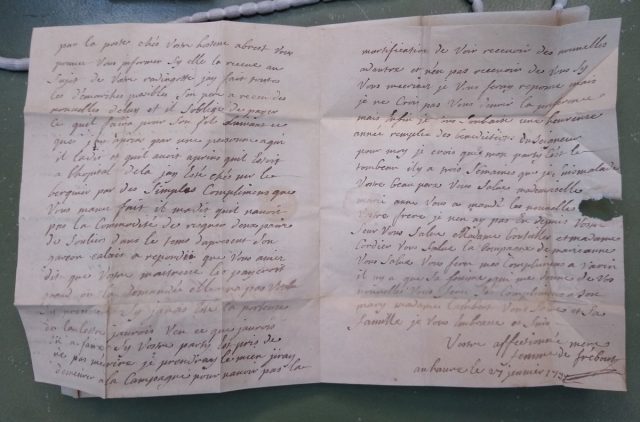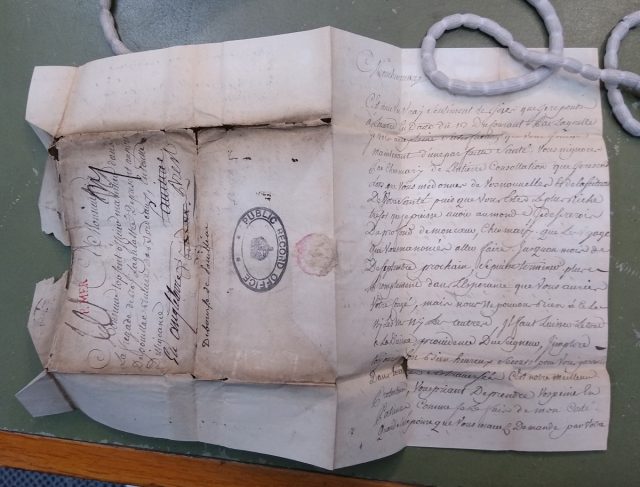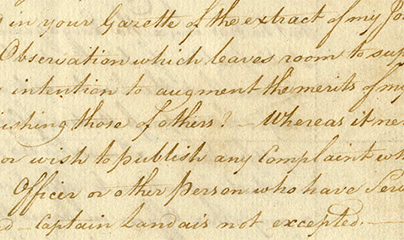
University of Cambridge historian Renaud Morieux was poring over materials at the National Archives in Kew when he came across a box holding three piles of sealed letters held together by ribbons. The archivist gave him permission to open the letters, all addressed to 18th century French sailors from their loved ones and seized by Great Britain's Royal Navy during the Seven Years' War (1756-1763).
"I realized I was the first person to read these very personal messages since they're written," said Morieux, who just published his analysis of the letters in the journal Annales Histoire Sciences Sociales. "These letters are about universal human experiences, they’re not unique to France or the 18th century. They reveal how we all cope with major life challenges. When we are separated from loved ones by events beyond our control like the pandemic or wars, we have to work out how to stay in touch, how to reassure, care for people and keep the passion alive. Today we have Zoom and WhatsApp. In the 18th century, people only had letters, but what they wrote about feels very familiar.”
England and France have a long, complicated history of being at war, most notably the Hundred Years' War in the 14th and 15th centuries. The two countries were also almost continuously at war during the 18th century, including the Seven Years' War, which was fought in Europe, the Americas, and Asia-Pacific as England and France tried to establish global dominance with the aid of their respective allies. The war technically evolved out of the North American colonies when England tried to expand into territory the French had already claimed. (Fun fact: A 22-year-old George Washington led a 1754 ambush on a French force at the Battle of Jumonville Glen.) But the conflict soon spread beyond colonial borders, and the British went on to seize hundreds of French ships at sea.

According to Morieux, despite its collection of excellent ships during this period, France was short on experienced sailors, and the large numbers imprisoned by the British—nearly a third of all French sailors in 1758—didn't help matters. Many sailors eventually returned home, although a few died during their imprisonment, usually from malnutrition or illness. It was no easy feat delivering correspondence from France to a constantly moving ship; often multiple copies were sent to different ports in hopes of increasing the odds of a letter reaching its intended recipient.
This particular batch of letters was addressed to various crew members of a French warship called the Galitee, which was captured by a British ship called the Essex en route from Bordeaux to Quebec in 1758. Morieux's genealogical research accounted for every member of the crew. Naturally, some of the missives were love letters from wives to their husbands, such as the one Marie Dubosc wrote to her husband, a ship's lieutenant named Louis Chambrelan, in 1758, professing herself his "forever faithful wife." Morieux's research showed that Marie died the following year before her husband was released; Chambrelan remarried when he returned to France, having never received his late wife's missive.
Morieux read several letters addressed to a young sailor from Normandy named Nicolas Quesnel, from both his 61-year-old mother, Marguerite, and his fiancée, Marianne. Marguerite's letters chided the young man for writing more often to Marianne and not to her, laying the guilt thick. "I think more about you than you about me," the mother wrote (or more likely, dictated to a trusted scribe), adding, "I think I am for the tomb, I have been ill for three weeks." (Translation: "Why don't you write to your poor sick mother before I die?")

Apparently, Quesnel's neglect of his mother caused some tension with the fiancée since Marianne wrote three weeks later asking him to please write to his mom and remove the "black cloud" in the household. But then Marguerite merely complained that Quesnel made no mention of his stepfather in his letters home, so the poor young man really couldn't win. Quesnel survived his imprisonment, per Morieux, and ended up working on a transatlantic slave ship.
For Morieux, reading the letters shed new light on the lives of shipmen and their families, particularly the women. "These letters show people dealing with challenges collectively," he said. "Today we would find it very uncomfortable to write a letter to a fiancée knowing that mothers, sisters, uncles, neighbors would read it before it was sent, and many others would read it upon receipt. It’s hard to tell someone what you really think about them with people peering over your shoulder. There was far less of a divide between intimate and collective.”
Annales Histoire Sciences Sociales, 2023. DOI: 10.1017/ahss.2023.75 (About DOIs). (In French)



3175x175(CURRENT).thumb.jpg.b05acc060982b36f5891ba728e6d953c.jpg)
Recommended Comments
There are no comments to display.
Join the conversation
You can post now and register later. If you have an account, sign in now to post with your account.
Note: Your post will require moderator approval before it will be visible.